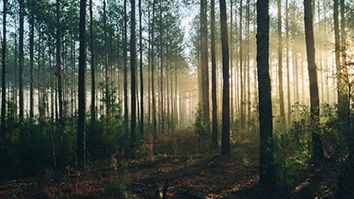Citation
Haughn, C.; Rupper, G.; Wunderer, T.; Yang, Z.; Johnson, N. M.; Wraback, M.; Garrett, G. A. Dynamics of radiative recombination in semi-polar Al-rich AlGaN multi-quantum wells for deep-UV emitters. International Workshop on Nitride Semiconductors.; Kanazawa, Japan. Date of Talk: 11/11/2018
Abstract
Deep-UV emission for laser diodes and LEDs has been seen to be useful for fluorescence-free Raman spectroscopy, communication, and water purification. Interest has focused on aluminum-rich aluminum gallium nitride (AlGaN) due to its wide bandgap and high exciton binding energy. There are several challenges for utilizing Al-rich AlGaN for deep-UV emitters. First, the highly radiative nature observed in GaN, AlN and bulk AlGaN films is not seen in device-relevant QW structures due to quantum confined stark effect and localization of carriers at interfaces. [1]. Additionally, the emitted light at Al-compositions relevant for sub-250nm light emission transitions from TE to TM polarization due to the reversal of the order of the valance bands between GaN and AlN. The TM polarization of light impedes efficient light extraction through the c-plane surface. The use of non-c-plane crystal orientations can enable a reduction in QCSE, improved radiative lifetime, and improve light extraction for TM polarized emission. We used PL and TRPL to characterize the radiative nature of a series of semi-polar (20-21) AlGaN quantum wells. Al0.69Ga0.31N/Al0.9Ga0.1N quantum wells with 3 nm thick wells and 10 nm thick barriers were grown on (20-21) AlN by MOCVD. [2]. To understand the dynamics observed in TRPL experiments we compared our results to a non-equilibrium Greens function (NEGF) formalism. We observed record fast radiative lifetimes at 75K and verified radiative dominated recombination with temperature-dependent TRPL and fluence dependence of integrated photoluminescence. At low temperatures (75K) radiative recombination competes favorably with non-radiative recombination and demonstrates less localization and QCSE than with c-plane multiple quantum wells. NEGF modelling, which accounts for excitons and free carriers on an equal footing, shows a close match to experimental results. The fitted effective TRPL lifetime is on the order of ~80 ps as compared to previous reports for semi-polar low temperature lifetime of 3.5 ns. [3]. The wave function calculated from the NEGF model shows high overlap (0.872) in semi-polar MQWs compared to that for narrow QWs on c-plane (0.639). Polarization-resolved photoluminescence measurements show a lower degree of polarization in the (20-21) than (0001)-oriented samples from previous reports. [2,4] These results suggest that the development of growth on semi-polar and non-polar substrates for emission below 250 nm can improve the radiative recombination and light extraction over traditional c-plane structures. [1] Chichibu et al., J. Appl. Phys. 113, 213506 (2013). [2] T. Wunderer et al. Applied Physics Letters, 111, 111101 (2017). [3] S. Ichikawa, et al. Applied Physics Letters 104, 252102 (2014). [4] M. Lachab Applied Physics Express 10, 012702 (2017).


